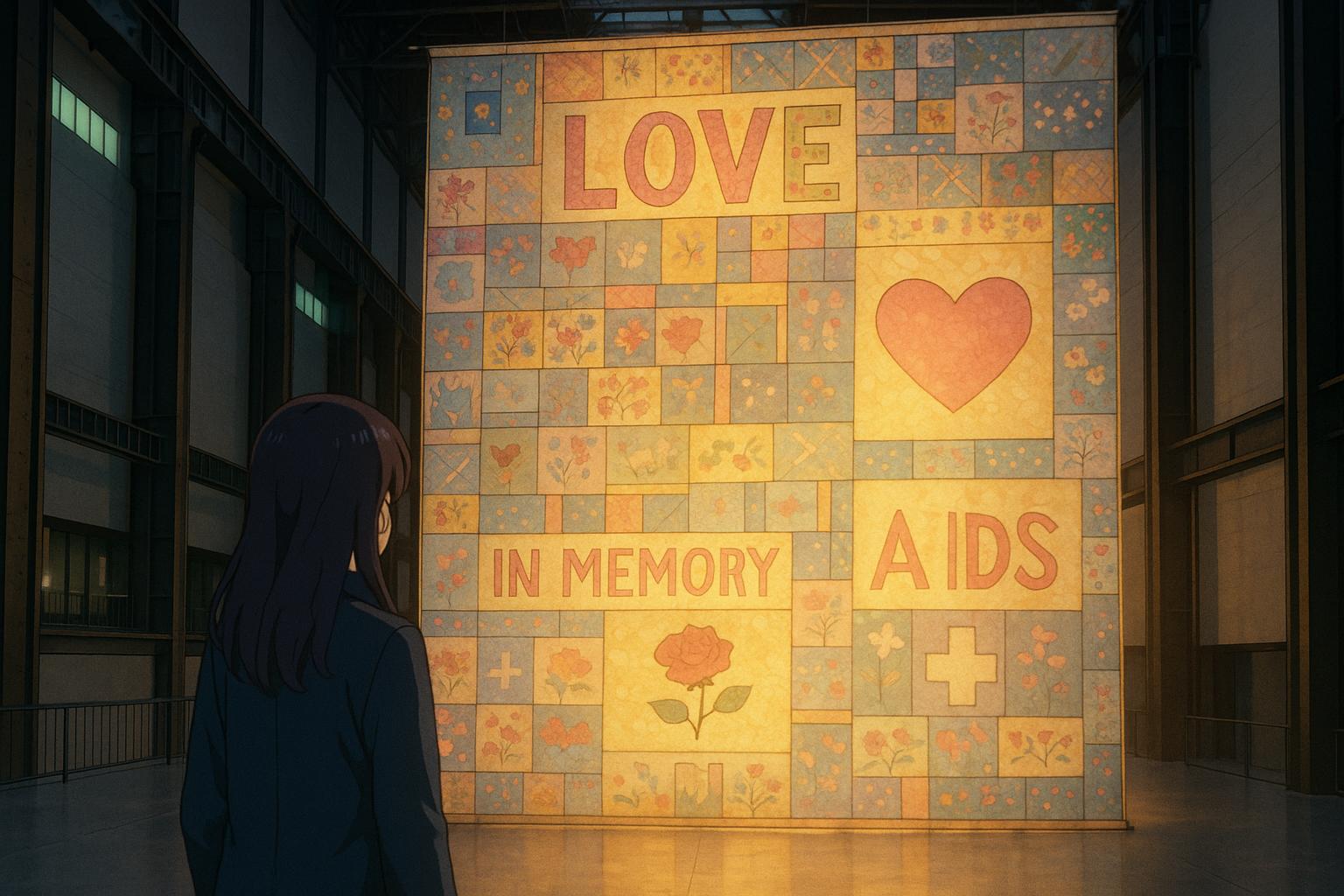Frankie O'Reilly vividly recalls the life-changing moments under the London skies, where he and his childhood friend, Georgie Long, forged a bond that transcended friendship to become a loving partnership. Their journey began in the 1980s, shortly after they left Northern Ireland for London. By the mid-1980s, both were diagnosed with HIV, and the spectre of the disease loomed large, claiming many lives in their community. "I started seeing friends slowly dying," Frankie recalls, likening the experience to waiting for friends at a bus stop, only to watch them depart, leaving him alone. Tragically, Georgie succumbed to an Aids-related illness in 1992. The pain of loss transformed into a commitment to remember not just Georgie but also the countless others who faced similar fates. This commitment culminated in the UK Aids Memorial Quilt, a moving collection with 42 quilts and 23 textile panels commemorating 384 individuals who lost their lives to HIV/Aids in the UK. The quilt will be displayed at the iconic Tate Modern from June 12 to 16, 2025, marking the largest public showing of the quilt since its inception in 1994.
The quilt, a powerful tapestry of grief and remembrance, embodies personal stories interwoven with artistic expression. Each panel is crafted by those who loved the departed, forming a visceral reminder of both the individuals memorialised and the political activism surrounding the epidemic. "When I nursed Georgie at home, the last three years were just awful," Frankie shares, adding that participating in the quilt project played a crucial role in his healing process. The initiative to create the quilt was catalysed by Scottish activist Alistair Hulme, who was inspired by the American version first displayed in San Francisco in 1985. Alongside Frankie, contributors like Cathy John and Grace McElwee stitched panels to honour their friend Michael, whose journey with Aids exemplified the broader narrative of the epidemic—one marked by love, laughter, and ultimately, profound loss.
Notably, this exhibition arrives at a time of renewed relevance as global aid for HIV/Aids confronts significant reductions. With the UK’s aid budget cuts and diminished US funding for prevention programmes, the quilt serves as a stark reminder of the ongoing need for compassion and awareness. Author Charlie Porter, who initiated the exhibition by writing to Tate's director in July 2024, aims to leverage the quilt's visibility to rally ongoing support and challenge the lingering stigma associated with HIV. "The history of the quilt involves it being displayed in iconic locations," he states, hoping that this display not only pays tribute but also facilitates healing among those who have long been disenfranchised.
The UK Aids Memorial Quilt is a testament to collective grief and resilience, created during a time when many faced isolation and shame. It includes notable figures such as novelist Bruce Chatwin and actors Denham Elliott and Ian Charleston, embodying the artistic excellence and political activism that the pandemic inspired. Following previous displays in the late 1980s and early 1990s, it seeks to humanise the narrative of Aids and preserve the memory of those lost. Those behind the quilt believe that despite advancements in medical treatment, the struggle against stigma and neglect must continue. In addition to the physical display, the quilt has been digitised and made available online, allowing global access to its panels and stories, ensuring that those who suffered are never forgotten.
As the public prepares to view this poignant artwork at the Tate Modern, the exhibition promises to be an outpouring of love, friendship, and dedication—a chance not only to remember but also to reflect on the impact of HIV/Aids that still resonates today.
📌 Reference Map:
Source: Noah Wire Services
